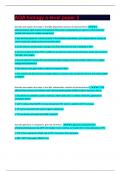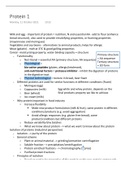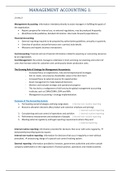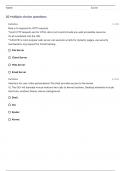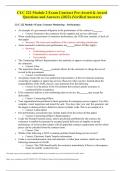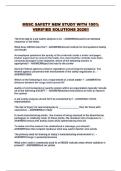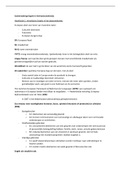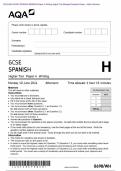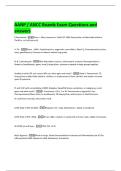describe and explain the steps in the light dependent reaction of photosynthesis - ✔✔✔1.
photoionisation: light reaches chlorophyll in PSII, which is absorbed by an electron, which becomes
excited and moves to a higher energy level.
2. the electron passes to a carrier protein in the thylakoid membrane, and is passed down a series of
carrier molecules called an electron transfer chain.
3. as the electron moves down, energy is lost from the electron and is released as ATP.
4. the loss of electron from PSII is 'refilled' by an electron produced by photolysis, which also produces
hydrogen and oxygen.
5. the lost electron reaches PSI, which absorbs light energy and boosts another electron to a higher
energy level (excitation).
6. this electron also goes down an electron transport chain.
7. this reaches the final electron acceptor which is a proton. they combine to form H and reduce NADP
to NADPH.
describe and explain the steps in the light independent reaction pf photosynthesis. - ✔✔✔1. CO2
diffuses into stroma and combines with ribulose bisphosphate (RuBP) using the enzyme rubisco.
2. this forms an unstable 6 carbon molecule, which splits into 2 3 carbon molecules, glyercate-3-
phosphate (G3P) .
3. G3P is reduced by NADPH to triose-phosphate (TP), which is aided by ATP for energy.
4. TP can be converted into useful organic substances.
5. TP can also be reformed into RuBP using ATP.
describe glycolysis in respiration. give net formation. - ✔✔✔1. glucose is converted into
phosphorylated glucose by 2ATP. this makes it very reactive, so it splits into 2 triose phosphate (TP).
2. 2TP is then oxidised by 2NAD and 4 ATP is formed to form pyruvate.
3. NET: 2ATP, 2Pyruvate, 2NADH, 2H+
,describe links reaction in respiration. give net formation. - ✔✔✔1. pyruvate diffuses into the matrix of
mitochondria.
2. pyruvate is oxidised by NAD. CO2 is lost. this forms acetate.
3. acetate and co-enzyme A combine to form acetyl co-enzyme A.
4. NET: CO2, reduced NAD, acetyl co-enzyme A
describe krebs cycle in respiration. give net formation. - ✔✔✔1. acetyl co-enzyme A combines with 4
carbon molecule (oxaloacetate) to form 6 carbon citric acid.
2. CO2 is lost (decarboxylation), molecule is oxidised by NAD and ATP is produce. this forms 5 carbon
compound.
3. it is oxidised by 2NADH and FAD, and is decarboxylated.
4. this forms 4 carbon molecule again.
describe oxidative phosphorylation in respiration. - ✔✔✔1. reduced coenzyme passes its H to a carrier
protein in the ETC. this splits into a proton and electron.
2. the protons pass through the space between inner and outer mitochondrial membrane.
3. electrons pass through proteins on ETC.
4. protons return back via ATP synthase in the membrane, producing ATP.
5. the protons and electrons recombine to form H, which combines with O to form water.
6. oxygen is the last electron acceptor in the ETC.
define biomass - ✔✔✔the total mass of organisms in a given area
what is the 'gross primary production' - ✔✔✔the chemical energy stored in a plants biomass
what is the 'net primary production' - ✔✔✔the chemical energy stores in a plants biomass after
respiratory losses have been considered. this energy is available to consumers.
, how can you calculate the net primary production? - ✔✔✔NPP = GPP - R
why is converting sunlight energy into biomass in producers inefficient? - ✔✔✔some light isn't the
correct wavelength to be absorbed
some light doesnt hit chloroplast
some light is converted into heat energy
some light energy is reflected
describe the nitrogen cycle. - ✔✔✔fixation:
atmospheric nitrogen can be fixed by rhizbium bacteria.
if struck by lightning, it becomes reactive and combines with oxygen to form NO.
ammonification:
saprobionts feed on organic matter and release ammonia, which then forms ammonium ions in the soil.
nitrification:
nitrifying bacteria convert ammonium ions into nitrite ions and then to nirate ions.
denitrification:
anaerobic denitrifying bacteria convert soil nitrates into gaseous nitrogen.
homeostasis - ✔✔✔the maintenance of an internal environment within restricted limits in organisms.
all cells are in an environment that meets their requirements and allows them to function normally
despite external changes.

